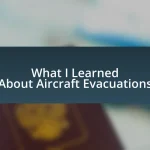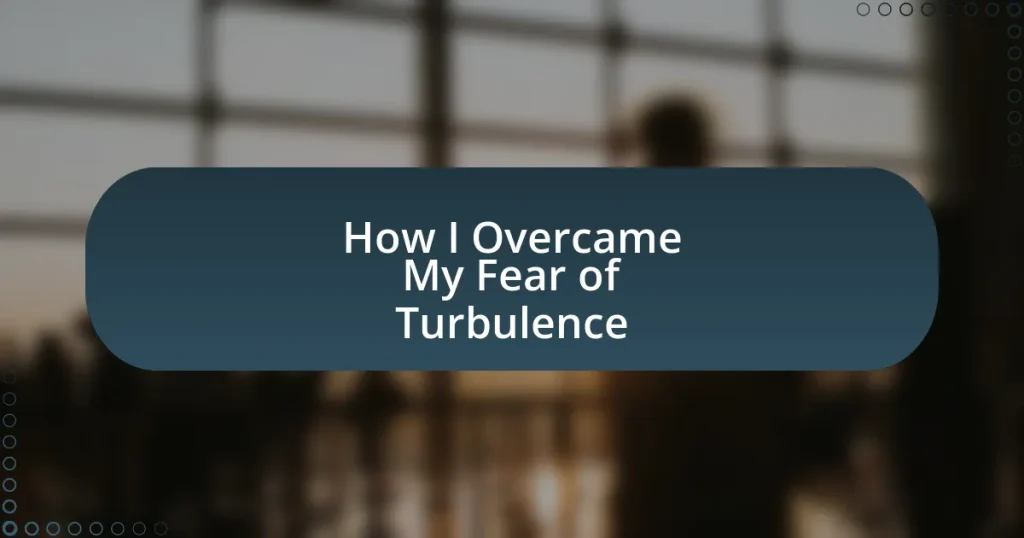Key takeaways:
- Understanding that turbulence is a normal part of flying and that pilots are trained to handle it can significantly alter perceptions of fear.
- Identifying personal triggers, such as past experiences and physical sensations, helps in managing anxiety during flights.
- Practicing grounding techniques, like the “5-4-3-2-1” method and visualization, effectively reduces anxiety while flying.
- Seeking professional help provides coping strategies and reinforces the importance of addressing fears constructively.
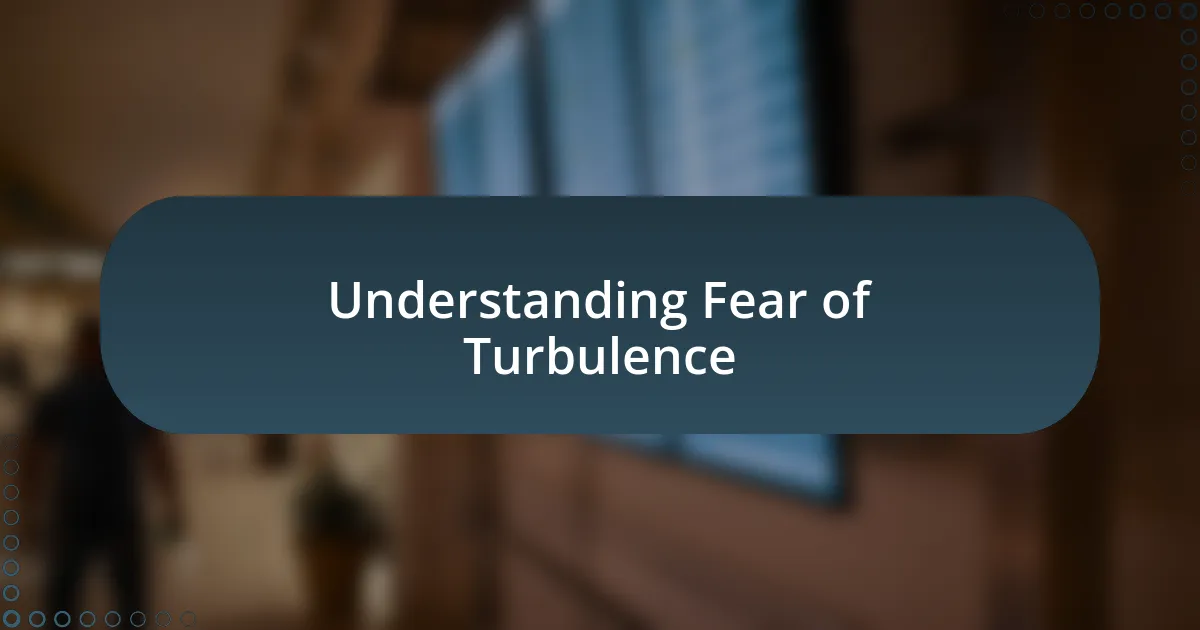
Understanding Fear of Turbulence
Fear of turbulence can manifest for various reasons, often tied to a lack of control in a situation that feels inherently unstable. I remember my first flight where turbulent conditions turned smooth air into a bumpy ride. It wasn’t just the unsettling motion; it was the uncertainty that gnawed at me—what if something went wrong?
For many, turbulence triggers primal instincts. It’s not just a bump in the air; it feels like the plane is wrestling against the atmosphere itself. I once caught myself clenching my fists, overwhelmed with anxiety. Why do we let our minds wander to the worst-case scenarios, even when flying is one of the safest modes of transport?
Understanding that turbulence is a normal part of flying can be a game-changer. When I learned that pilots are trained to handle such situations and that planes are built to withstand far more than what turbulence throws at them, it shifted my perspective. I found myself asking: what if I focused on the journey rather than the brief discomfort? That simple reframing began to reshape my experience in the skies.

Recognizing Personal Triggers
Recognizing my personal triggers was a pivotal moment in my journey to overcoming my fear of turbulence. For me, it wasn’t just the feeling of the plane shaking; it was the memories of past experiences that would flood my mind, heightening my anxiety. I vividly recall one flight where I watched others remain calm while I felt my heart race and palms sweat. Identifying those moments—like when I saw turbulence heading my way or heard the fasten seatbelt sign ding—helped me understand what specifically set off my fear.
To help you identify your triggers, consider these key aspects:
- Past Experiences: Reflect on flights where turbulence impacted you deeply. What about those situations felt particularly unsettling?
- Physical Sensations: Pay attention to how your body reacts. Do you find yourself tensing up or feeling nauseous during certain phases of the flight?
- Emotional Responses: Notice if your thoughts spiral during turbulence. Are you constantly worried about what could go wrong?
- Social Influences: Observe how the reactions of fellow passengers influence your feelings. Do you feel more anxious when others seem nervous?
Understanding these triggers laid the groundwork for addressing my fears more effectively. Each time I could pinpoint a trigger, it became easier to manage my response, ultimately leading to a more enjoyable flying experience.
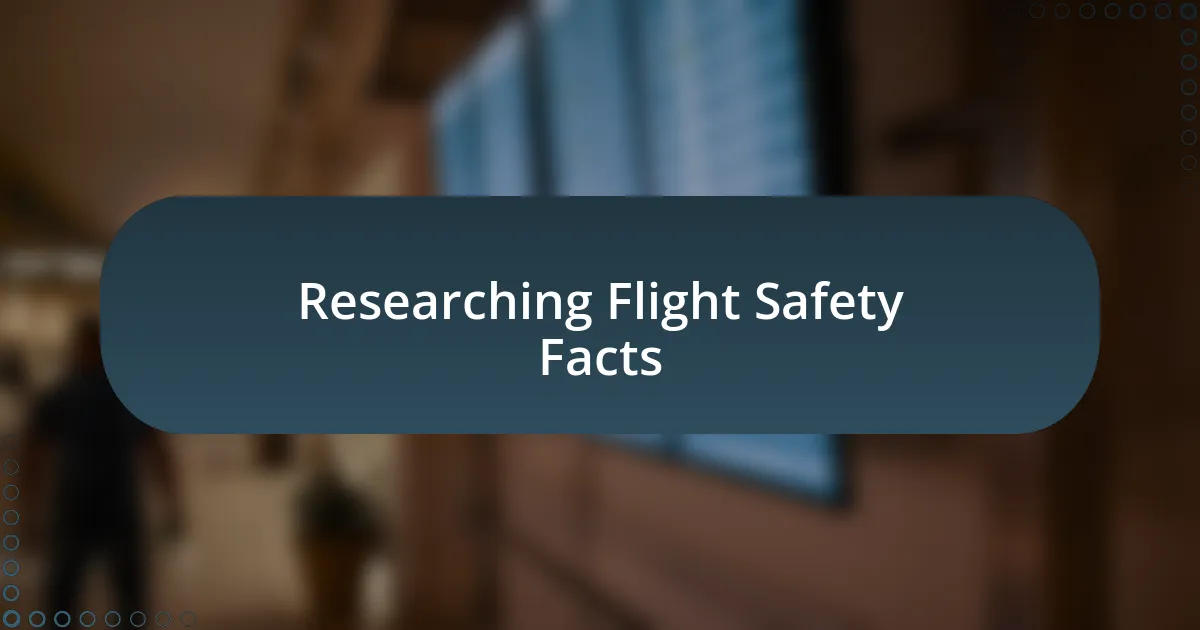
Researching Flight Safety Facts
Researching flight safety facts was a game-changer for me. I stumbled upon statistics that highlighted just how rare accidents are. Learning that flying is statistically one of the safest modes of transportation gave me a sense of relief. Did you know that the odds of being involved in a plane crash are about 1 in 11 million? When I internalized this, it helped contextualize my fear of turbulence as a relatively minor concern.
I also found it comforting to delve into the technology behind modern airplanes. For instance, each aircraft is equipped with multiple layers of safety features designed to handle turbulence effectively. While I used to feel a knot in my stomach during turbulence, understanding how pilots are trained to manage it and how planes are engineered to withstand extreme conditions shifted my perspective. This knowledge really helped me detach my emotional response from what was happening around me.
Additionally, I came across factual comparisons that reinforce the safety of air travel. By juxtaposing flying with everyday activities, I realized just how much safer flying really is.
| Activity | Chances of Injury |
|---|---|
| Flying | 1 in 11 million |
| Driving a Car | 1 in 5,000 |
| Walking | 1 in 553 |
This table illustrates that while turbulence can feel unsettling, I was able to recognize that my fear was disproportionate to the actual risks involved. From then on, knowledge became my ally in this journey.
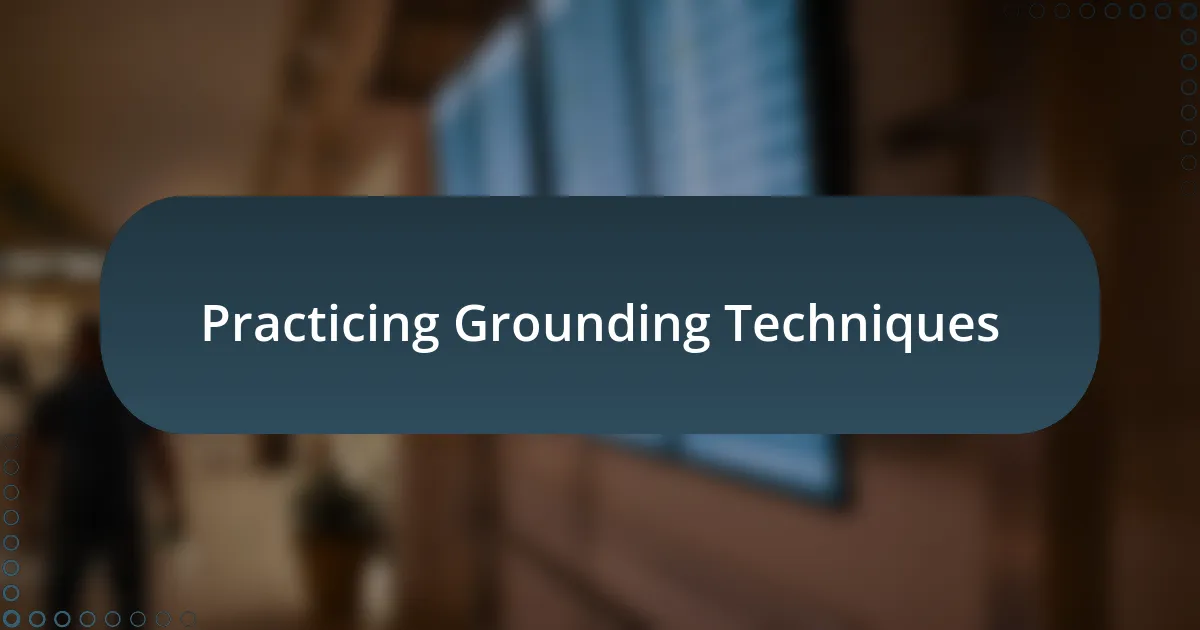
Practicing Grounding Techniques
Practicing grounding techniques was vital in managing my anxiety during flights. I remember a particularly turbulent trip where I instinctively focused on my breath. Taking slow, deep breaths helped bring me back to the moment, allowing me to feel more anchored rather than being swept away by panic.
One technique that really worked for me was the “5-4-3-2-1” method, which emphasizes engaging the senses. As I sat there, feeling the vibration of the plane beneath me, I began to identify five things I could see, four I could touch, three I could hear, two I could smell, and one I could taste. This practice shifted my mind from worrying about turbulence to appreciating the present moment and the experience of flying.
Another approach I found beneficial was visualization. I would imagine myself on solid ground, feeling the support of the earth beneath me while experiencing the turbulence above. This mental imagery transformed my fear into a kind of thrill, making me feel like an adventurer rather than a victim of the elements. Have you ever tried turning your fear into curiosity? I discovered that when I did, turbulence felt less like a threat and more like part of the journey.
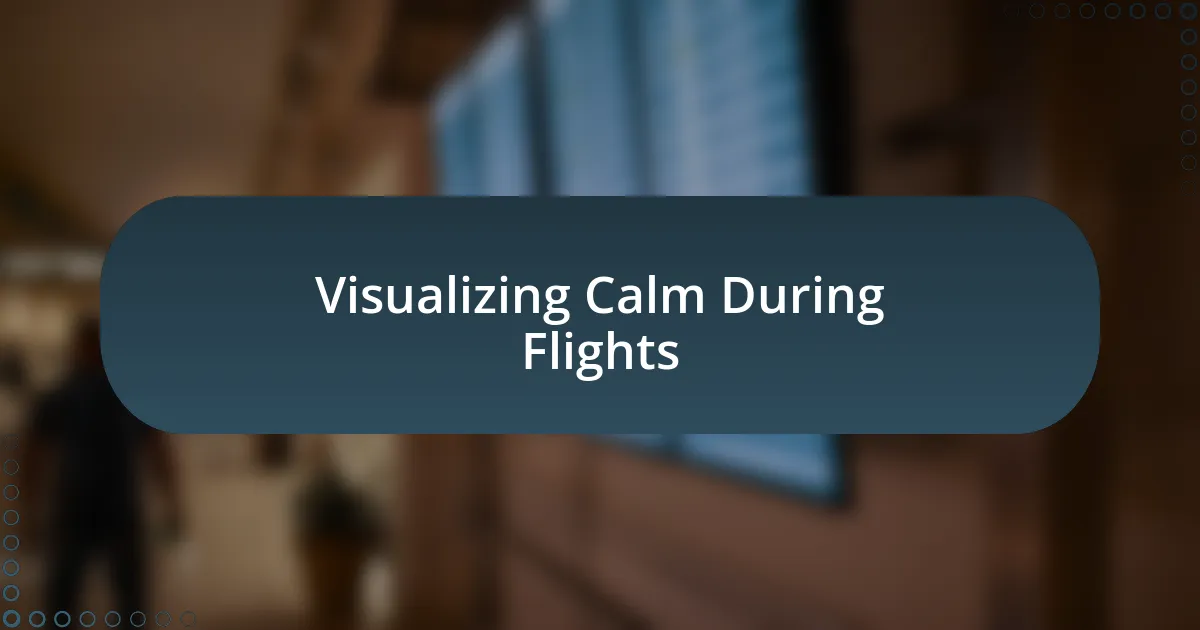
Visualizing Calm During Flights
Visualizing calm during flights became a powerful tool for me in overcoming my fear of turbulence. I often found myself picturing a serene beach, with gentle waves lapping at the shore. This imagery made me feel as if I was resting on solid ground, instead of soaring thousands of feet in the air. Have you ever considered how your environment can shape your emotions?
Another technique I embraced was transforming the airplane cabin into a cozy space where I felt safe. I would imagine wrapping myself in a soft blanket, sipping hot tea, and reading my favorite book. This not only distracted me from the surrounding chaos but also cultivated a sense of comfort and ease, making the turbulence feel like a minor inconvenience rather than a major obstacle.
During these moments of visualization, I allowed myself to lean into the emotions that arose. Instead of resisting fear, I acknowledged it as part of my journey. This awareness helped me realize that it was okay to feel anxious, and that I could also choose to embrace moments of tranquility, even when the plane was shaking. Isn’t it fascinating how our minds can shape our experiences?

Seeking Professional Help
Seeking help from a professional was a turning point in my journey to conquer my fear of turbulence. I remember sitting in my therapist’s office, feeling a mix of apprehension and relief. It was the first time I truly articulated my fear to someone who understood the psychology behind it. Have you ever felt that sense of liberation when finally sharing your struggles?
Therapy sessions provided me with coping strategies that I hadn’t considered before. I learned techniques to manage my anxiety and discovered how my thoughts influenced my emotional responses. The combination of cognitive-behavioral therapy and mindfulness practices transformed the way I approached flying. I now ask myself, “How can I reframe my thoughts to make this experience more manageable?”
Working with a professional also helped me realize that seeking help doesn’t signify weakness. In fact, it takes a lot of strength to confront fears and actively seek solutions. I often reflect on how much progress I’ve made since those initial sessions, and it motivates me to continue evolving. Can you recall a moment when reaching out for support made a significant difference in your life?

Embracing a Positive Mindset
Learning to embrace a positive mindset was a game-changer in my journey through turbulence anxiety. I vividly recall a flight where, instead of fixating on the bumpy ride, I listened to my favorite music and visualized a peaceful beach scene. Each note carried me away from my fears, reminding me how powerful my thoughts could be in shaping my experiences.
One powerful technique I adopted was affirmations. I began each flight by repeating phrases like “I am safe” and “This discomfort is temporary.” It sounds simplistic, but these affirmations grounded me in the present, allowing me to redirect my focus away from turbulence to the adventure ahead. Have you ever tried a simple phrase to change your mood?
Over time, I’ve found that surrounding myself with positivity has a ripple effect. I started engaging with fellow travelers who shared their own stories of overcoming fear. Their courage inspired me, and I realized that we’re all in this together. Isn’t it amazing how a supportive community can uplift our spirits and change our outlook?









